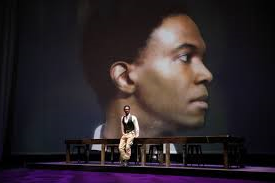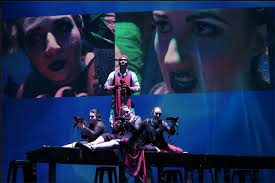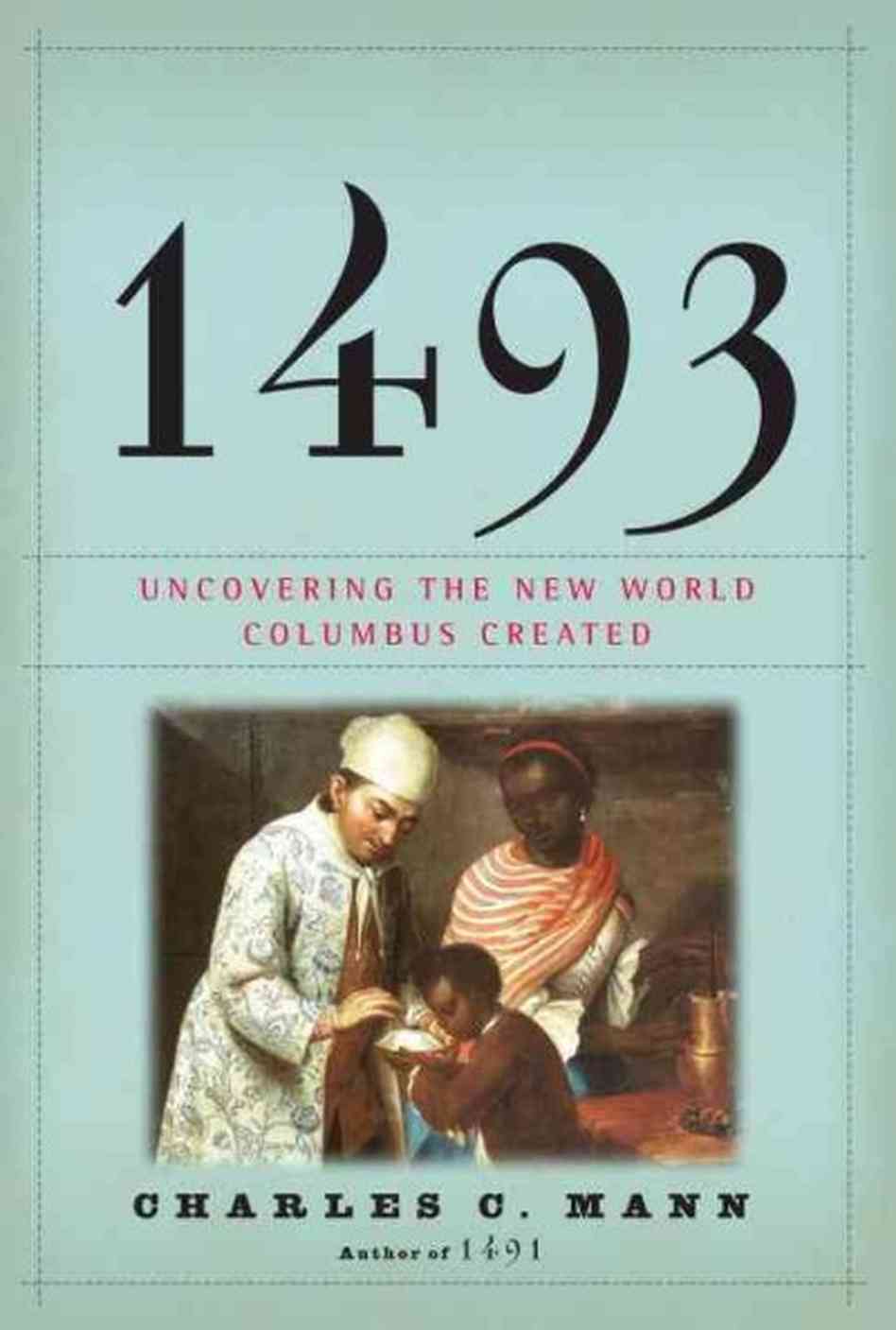DBH and I leave for Tucson in a week – so we decided to go out in a blaze of Chicago theatrical glory. Three very different experiences: Macbeth, All Our Tragic and The Whaleship Essex.
Nmon Ford
Macbeth, the opera version by Ernest Bloch, and staged by Chicago Opera Theater, is a rather lugubrious 1904 version of the Scots tragedy, totally saved by Sean T. Cawelti, the Video Designer. Not that there were not great moments of opera: Nmon Ford as Macbeth was both eye and ear candy. We will see more of him in larger opera venues. The few minutes of chorus time were splendid. 98% of the score was quasi-modern atonal, but the chorus was robust and alive with late 19th century tonality and lots of major and minor chords.
Table with video above
Sean T. Cawelti transformed the huge box of the Harris Theater into a stage framed with integrated video action. The three witches (here zaftig, young women) aimed video camera at their faces and bodies, producing huge close-up projected videos over the stage, which often featured other action. (The viewing challenge was not unlike attending an NBA game and finding yourself focusing on the video screens rather than the live action.) The only furnishings on the stage were a 25 x 6 table on which most of the action centered – and a few plain gray chairs. Video directly over the table doubled the action. Video at the corners transported the featured singer into swirls of mirror images, almost seeming to reveal the inner mind. How does Mr. Cawelti do it? Who knows, but he is magical. In our previous Chicago Opera Theater production, he designed the shadow puppets and video elements. Again, a significant enhancement to the theatrical experience. www.seancawelti.com
Survivors in their "whalers"
The Whaleship Essex, produced by Shattered Globe Theatre, and written by ensemble member, Joe Forbrich, is based on the book, The Wreck of the Whaleship Essex. This book was originally published in 1821 and written by First Mate Owen Chase just months after he returned home to Nantucket. It is the basis for Hermann Melville Moby Dick. The theater version includes 15 crew members that move from naïve land-lubbers to seasoned crew to dying survivors after a whale rams and sinks their ship. Survivors travel 2000 miles in three whalers. Most died and were eaten by the rest. No rainbows and unicorns in this story. Overall, well done, well-staged. I particularly enjoyed the sea chanties and spirituals that tied the story together.
Helen of Troy and her daughter, Hermione
Then there is All Our Tragic – 12 hours in the theater. Yes, you read right, 12 hours. We arrived about 10:30 A.M. to be there when the doors opened to obtain prime seats. And we really didn’t leave the theater until 11:15 in the evening. The event combines the 22 surviving Greek tragedies (Aeschylus, Sophocles, Euripides) into a single 12-hour epic. We loved it. This is “balls out”, “think no small thoughts” theater. What you expect in Chicago. 14 actors each played three roles and it seemed that many were in all the episodes, but that would be impossible. Still the pages of lines memorized and characters inhabited are staggering. Several things noted:
* 90% of the attendees were under 40 – Chicago is a young theater town.
* The producing company, The Hypocrites, gets it. Everything was perfectly handled from comfortable chairs, to restrooms cleaned, to lots of food, to a totally engaged and accommodating staff. We were left with nothing to complain about…
* We don’t know nearly enough about the Greek tragedies. Yes, we will reread them and enjoy them more than ever.
So we depart Chicago infused with the great cultural life and look forward to Tucson where the thoughts are not so large nor the productions so daring. But we anticipate fun at the local theater and frequent visits to the cinema for the Metropolitan Opera Live broadcasts.






















